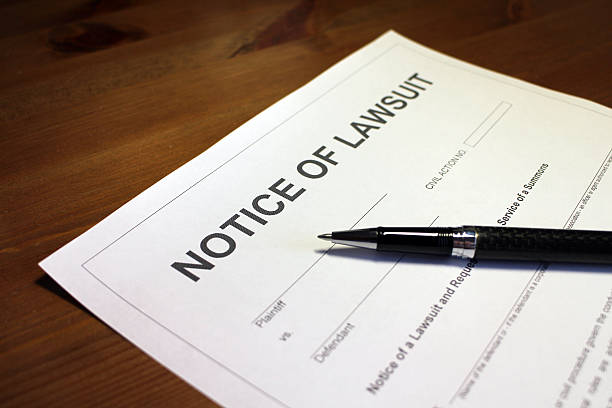When a group of people or group of business have suffered common injuries or issues, they can file for a class action lawsuit. The group of people generally file these types of lawsuits against a common defendant.
Why do these groups file such lawsuits? Generally, people consider a class action lawsuit where the damages claimed by each individual are too small for the individual claims to be worthwhile.
For example, if multiple employees have faced serious issues because of one common employer, all individuals can file a class action lawsuit against that employer.
Plaintiffs are the individuals who bring the case forward. Respondents are the individuals against whom the plaintiffs make claims.
Common examples of respondents include financial institutions, retailers, manufacturers, employers, and government officials. A group of people can file a class action lawsuit against the above mentioned respondents.
The reasons could vary depending upon the situation. Some common reasons include unlawful employment practices, false advertising by retailers, or defective products by manufacturers.
Examples include:
- Mass tort claims (tort is any wrongful act that can lead to legal liability)
- Consumer protection claims;
- Industrial claims;
- Claims by investors
Notably, the majority of class action lawsuits are settled outside of court. Generally, each plaintiff will receive some portion of the settlement which could be in the form of cash, a monetary refund, or some other benefit.

Class Action Lawsuit: Requirements For It To Commence
Before a class action lawsuit can commence, there are certain requirements that need to be fulfilled. These include:
- There are at least seven people who are making a claim against the same person;
- All the plaintiffs are facing either the same issue or some related issue;
- The claims give rise to at least one substantial issue of law or fact.
In case of multiple respondents the Full Court of the Federal Circuit Court does not require that each of the plaintiffs needs to have a claim against each one of the respondents. Rather, if each plaintiff has a claim against the same respondent, the class action can proceed.
How Do Class Action Cases Work?
The process is fairly straightforward. Among the group of plaintiffs, there is one lead plaintiff who represents them. The allegations made by the lead plaintiff, and the injuries he or she has suffered must be similar to those of all other class members.
A case cannot proceed until and unless a judge certifies the class. It is the responsibility of the lead plaintiff to show that the other plaintiffs have a solid claim against the respondent.
Moreover, the lead plaintiff must also demonstrate that the plaintiff have similar claims. In Australia, a plaintiff will be included in the lawsuit if they do not opt-out.
The following section provides information about the opt-out model that is followed in Australia.
Opt-in Versus Opt-out: Australian Legislation
Australia follows an opt-out model for class action. This includes:
- All claimants falling under a class will automatically become members of the class when filing for the claim regardless of whether or not they are aware of it.
- All claimants will be bound by the judgement of the Court, or bound by any settlement unless they opt-out of the process before a specific date that is set by the Court. The Court will also require that all claimants are aware of their proceedings, and their right to opt-out.
- Once a claimant has opted-out, the judgements will not be binding on them, neither will any other outcome of the proceeding. The claimant can choose to pursue individual proceedings if they wish to do so.
As opposed to the opt-out model, the opt-in approach will require claimants to indicate explicitly that they wish to be a part of the proceedings. Court judgements are not binding on the claimant until he or she opts-in.
Advantages And Disadvantages Of Class Action Lawsuits
There are multiple advantages of class action for plaintiffs. Some of them are:
- Class action prevents courts from being clogged with cases.
- The needs of multiple people are addressed at the same time.
- Overall cost of litigation is reduced.
- The plaintiff is provided some kind of compensation.
- Since there are so many plaintiffs, the defendants will generally be motivated to settle the case.
- These lawsuits ensure that all plaintiffs with similar injuries and claims are treated consistently.
On the other hand, certain disadvantages include:
- Lengthy court proceedings and delays because of all the complicated court proceedings involved;
- Plaintiffs may not always receive cash, they might instead only receive coupons which might not be satisfactory;
- Plaintiffs often give up their right to be able to make a claim against, or rather sue the respondent independently

JB Solicitors’ Legal Advice
Our employment and commercial lawyers can help all plaintiffs with any claims that they have against their employer, or other businesses such as retailers. We are experts in dealing with unfair dismissals and unlawful employment practices.
Similarly, under commercial law, we have the expertise in dealing with all disputes. Our lawyers have a wealth of experience and can build a strong case in all matters.
Our lawyers continually help the community in any way possible. With their expertise and compassion, lawyers at JB Solicitors have the ability to provide market-leading advice to all their clients.
Moreover, we also offer fixed-fee prices for our services. We value transparency and ensure that our clients are aware of all the legal costs before the legal proceedings begin. Our goal is to reach the best possible outcome in your matter. Because of our community-centred approach, we wish to solve your legal troubles such that you don’t need to worry about unnecessary costs.
For more information about our services, contact our friendly team today.
